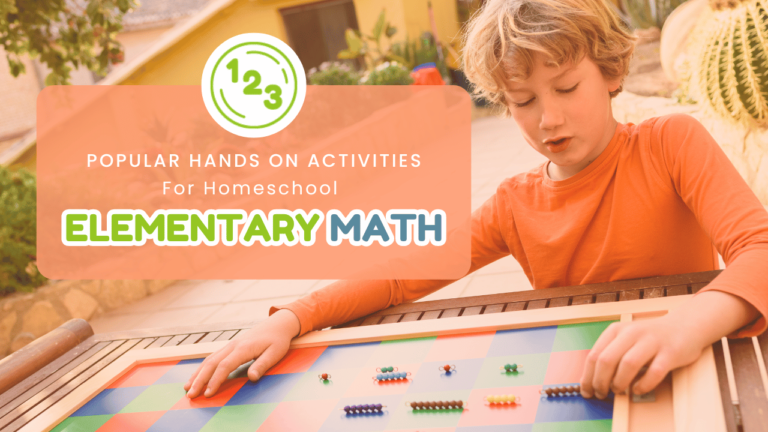One of the most common questions I hear is, “What is the best elementary math curriculum for my kid? We’ve tried 3 or 4 different programs, and nothing seems to work!” You’re not alone if you’ve found yourself staring at a sea of curriculum choices, wondering if there’s a best homeschool math curriculum for your child who learns in a different way. What if we told you that there’s a treasure trove of hands on activities just waiting to transform elementary math concepts into something tangible and exciting? You won’t even need to change curriculum to implement these ideas!
Imagine the joy of watching your child’s face light up as they discover architecture concepts by building with blocks, or unravel the mysteries of fractions through slicing an apple. Welcome to the world of hands on activities for elementary math! Learning math can be an adventure where every project is a step towards mastering math skills. You just need to have ideas designed to make math both fun and effective for kids who struggle with math.
In this blog article, we’ll explore creative, engaging ways to build solid math foundations. From simple DIY projects that utilize everyday household items to specialized educational tools, there’s something here for every homeschooling parent eager to see their child’s math confidence soar. Whether it’s understanding the basics of addition and subtraction or tackling more complex concepts like geometry and measurement, these hands on activities are crafted to turn challenges into opportunities for discovery and growth. So, grab your curiosity and let’s embark on this transformative mathematical adventure together!
The Power of Hands On Learning in Elementary Math
When it comes to teaching elementary math, hands on learning is a powerful tool that can greatly enhance a child’s understanding and retention of mathematical concepts. In math teacher terms, we call real objects used for math the concrete level. By engaging in hands on activities that involve concrete manipulatives, children are able to make connections between abstract ideas and concrete experiences. This not only makes math more enjoyable and relatable but also helps develop critical thinking skills and problem-solving abilities.
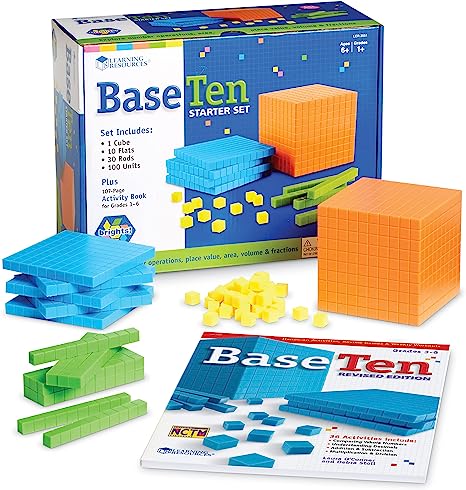
One of the key benefits of hands on learning is that it allows children to actively participate in the learning process. Instead of passively receiving information through lectures or worksheets, they get to explore, experiment, and discover mathematical principles on their own. This active engagement promotes a deeper understanding of the subject matter and encourages independent thinking.
Building Number Sense Through Tangible Manipulatives
Number sense is a fundamental skill that forms the basis for all future math learning. It involves understanding the relationships between numbers, recognizing patterns, and being able to manipulate numbers flexibly. One effective way to develop number sense is through the use of tangible manipulatives.
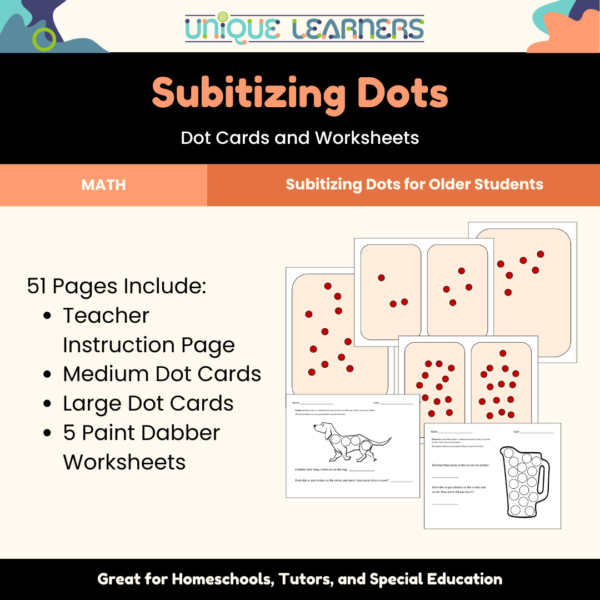
Tangible manipulatives are physical objects that children can touch, move, and manipulate to represent mathematical concepts. For example, using counting bears or colored blocks to represent quantities can help children visualize addition and subtraction problems. By physically moving these objects around, they can see how numbers combine or separate.
Counting Fun: Exploring Numbers Through Building Blocks
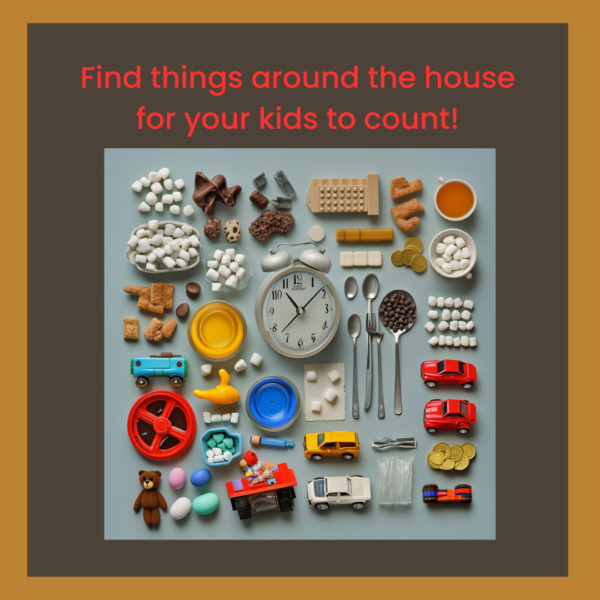
Counting is one of the first math skills that young children learn. It lays the foundation for understanding number relationships and basic arithmetic operations. You will find so many things around the house and out in nature to count, like:
- spoons
- bowls
- plates
- cups
- Hot Wheels cars
- shoes
- chairs
- windows
- beds
- pillows
- lamps
- rocks
- flowers
- trees
- pinecones
- cars
- people
- clothing, such as shirts, pants, hats, underwear, shoes
- snacks, such as goldfish crackers, marshmallows, carrots, apple slices
- keys on a piano or keyboard
- hinges on doors
- blocks of specific shapes
- storage boxes
Engaging DIY Projects for Elementary Math – Addition and Subtraction Mastery
Addition and subtraction are essential skills that children need to master in elementary math. Kids need quite a bit of practice with addition and subtraction, especially when it comes to regrouping. Place value can be a challenging concept for many kids who struggle with math.
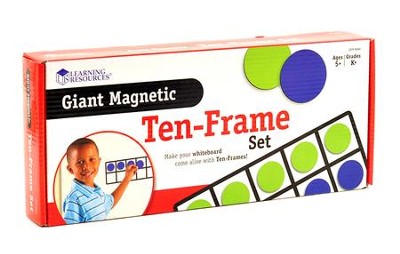
There are many fun manipulatives on the market for practicing basic addition and subtraction facts, like bugs, fruits, teddy bears, vehicles, and more! Or just use items from the counting list above. Keep concrete manipulatives way longer than you think your child “should” use them. You child will naturally move away from manipulatives when ready.
For children who really struggle with symbolic processing (attaching the meaning of quantity to the numeral), the best intervention is to embed dots into the math symbols.
If you purchase any specialized math manipulatives, invest in a starter set of Base 10 Blocks. An activities book often accompanies the blocks. Base 10 Blocks are typically 1 centimeter blocks for units, “longs” which are strips of 10 unit blocks, “flats” which are a square of 100 unit blocks, and a “cube” which is a larger block of 1,000 unit blocks. Base 10 Blocks are wonderful for demonstrating how regrouping happens when adding and subtracting larger numbers.
Hands On Activities for Multiplication Mastery
Many kids who struggle in elementary math don’t realize that multiplication is making groups. We practice skip counting, but so many times I have seen blank faces when I ask why we learn to skip count. If you have your children memorize any facts, multiplication facts and skip counting the multiples will prepare them for higher level math more than any of the other operations.
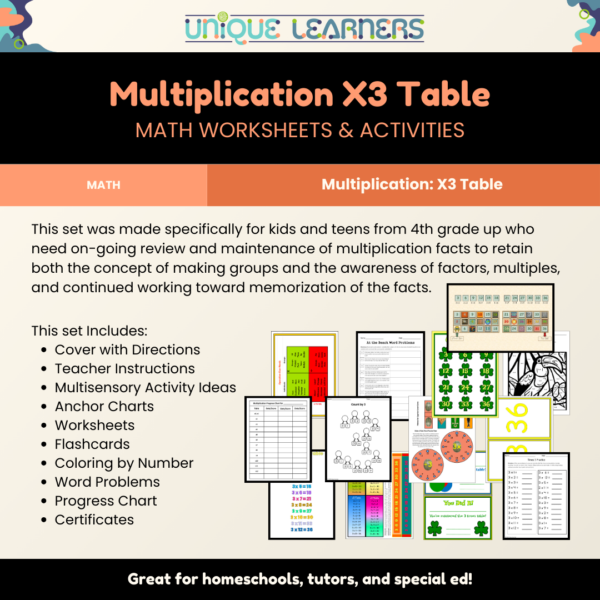
You will love our Multiplication Unit Studies for older students still working on multiplication facts. Each unit study has suggestions for multisensory learning activities, links to YouTube skip counting song videos, coloring pages, skip counting pages, dice games, a full-color folder game, pencil pokey plates, wristbands, bookmarks, large multiples for whole body activities, and so much more!
As you practice multiplication, look for real-world forms of groups. Here are just a few ideas. I’m sure you will start to see many more once you and your kiddos start looking!
- Pairs of socks, eyes, ears, arms, or legs for x2
- Packages of Clorox Wipes for x3 (at a store)
- Legs of animals, tables, or chairs and tires on cars for x4
- Nickels, fingers on hands, some types of flowers, and minutes on an analog clock for x5
- Packages of water or soda bottles, baked goods, legs on insects, and dresser drawers for x6
- Packages of hot dogs and buns, keys on a keychain, and legs on spiders for x8
- Dimes and many things come in packages of 10 for x10
- Eggs and donuts for x12
Fraction Frenzy: Understanding Fractions with Real-world Objects
Fractions can be a challenging for many children. Many kids grasp the idea of equal parts of a whole. If your kiddo struggles with the concept of parts of a whole, engage your child in helping to cut pizza, pie, sandwiches, fabric, or folding paper.
The transition to working with abstract fractions becomes so difficult for kids who struggle in connecting concepts to complex processes. As far as curriculum, the best math curriculum I have found for my students has been Channie’s Beginning Fractions or Kumon workbooks for grades 4, 5, and 6.
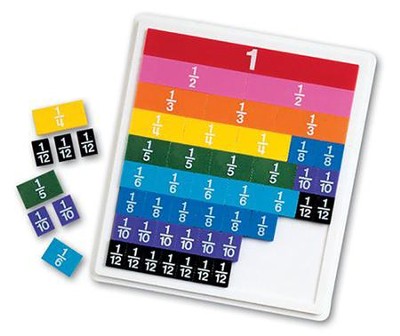
For beginning fractions and making equivalent fractions, I love using Rainbow Fraction Tiles, Squares, and Circles by Learning Resources. My favorite manipulatives for adding and subtracting fractions and changing improper to mixed numbers (and vice versa), is counting chips in little plastic bags. Then we start to look for fractions in packages all over when we go shopping.
We can’t assume that kids recall what the numerator and denominator mean after just a few days of elementary math practice. Once we start working with fractions, I emphasize over and over again that fractions are division: top divide by bottom – regardless of whether the bigger number is on top or bottom. We do a lot of calculator work and talk about whether we get a decimal (change of less than a dollar) or if we make whole groups.
Problem-Solving and Critical Thinking with Elementary Math Puzzles
Problem-solving and critical thinking are crucial skills in mathematics. They involve analyzing a situation, identifying patterns or relationships, and applying logical reasoning to find a solution. Math puzzles are an excellent way to develop these skills while making learning enjoyable.
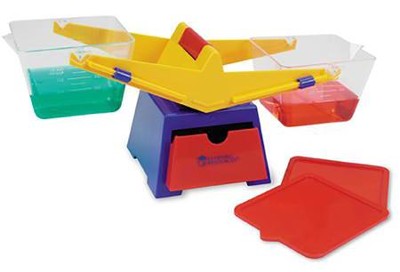
For beginning algebra, I use a primary bucket balance with green and red chips to teach beginning equations and “how to find the mystery number.” I’m working on our own Algebra Simplified curriculum for kids who struggle with math, yet need to satisfy an algebra requirement for their state homeschooling requirements or for those who need to work on problem solving in practical, every day adult life. Let us know if an Algebra Simplified curriculum is something that could help your teen, and we’ll bump it up in the projected curriculum development.
My favorite website for math thinking skills is Toy Theater. There are many others where kids can play math games. But I still seem to go back to Toy Theater again and again. If a student is in middle or high school grades, I start working on logical thinking skills, particularly the skill of elimination. I love Quizzles and MindBenders, but new ones come on the market all the time.
Math Games Galore: Turning Learning Into Playtime
Learning math doesn’t have to be all work and no play. In fact, incorporating games into your math lessons can make learning more enjoyable and interactive. Math games provide an opportunity for children to practice their skills in a fun and engaging way.
As you probably already know, Sue has been creating exciting folder board games for math for many years. We keep updating old games and creating new ones that will be favorites for your unique learner. Many of our folder game sets have practice worksheets and ideas for other multisensory math activities. You will love this Monopoly-style game that reviews multiplication facts. It does contain many component parts to cut out, but your kids will want to play this math folder games many times!
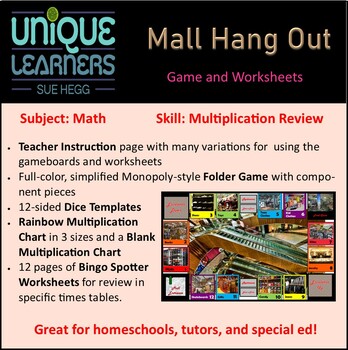
If your tween prefers games, look at the old Who’s Who? game where you make guesses and flip down people or animals. Pattern blocks, Tangrams, Puzzles, Hiding Blocks, and Color Cubes, and other visual spatial tasks are great for kids who have difficulty with geometric concepts. Games, like Quirkle, Set, Kanoodle, Rush Hour, and Blokus are also great games for logical thinking and visual memory skills. Connect Four, Goblet, Checkers, and Chess are great games for making predictions and working memory.
Conclusion: Embracing the Joy of Learning Through Hands On Math Activities
In conclusion, hands on activities are a valuable tool for teaching elementary math. They provide children with opportunities to actively engage in the learning process, develop critical thinking skills, and make connections between abstract concepts and real-world experiences. By incorporating hands on activities into your homeschooling routine, you can create a rich and meaningful math learning environment that fosters curiosity, creativity, and a love for learning. So, let’s embrace the power of hands on learning and watch our children thrive in their mathematical journey!
Grab your FREE e-book guide to revamp your homeschool for success!
Are you new to homeschooling, or just wanting a fresh start? Download our FREE “How to Homeschool in 6 Easy Steps” guide and get valuable insights from Sue’s 30+ years of experience as a special educator and homeschool mom of 4!
Want to know about new products and blogs?
Join our email newsletter to be the first to know about a new homeschool and special needs blog, and new products from our shop! Sign up for only the newsletter, or grab your FREE “How to Homeschool in 6 Easy Steps” guide and you will also be added to the newsletter!
Also, join our Facebook group!
Join our new “Homeschool Help for Special Needs” Facebook group! It is a place for homeschool moms to ask questions about homeschooling a child with special learning needs, share teaching and curriculum ideas that have worked (and those that bombed), and be real about the unique challenges of homeschooling with special needs. If you want to join us, be sure to answer the member questions to help us keep this private group secure. Join us now!
